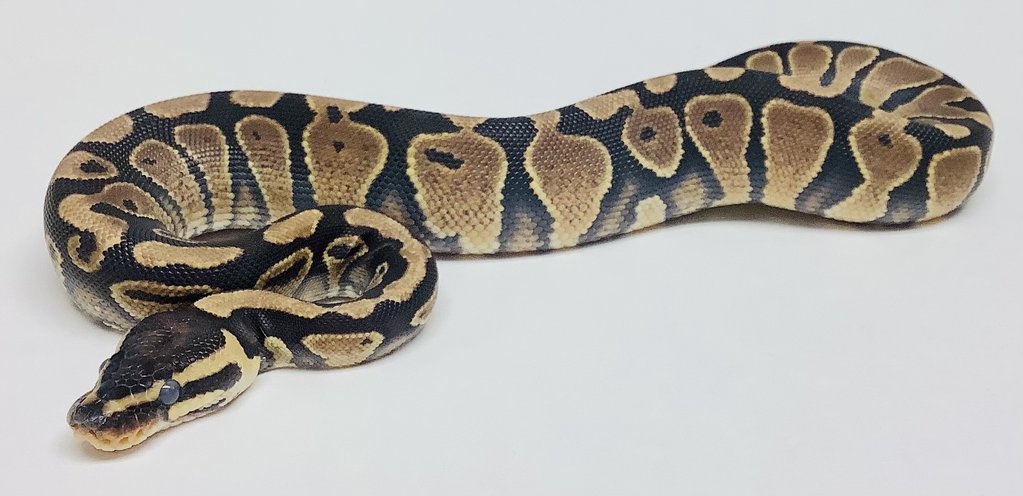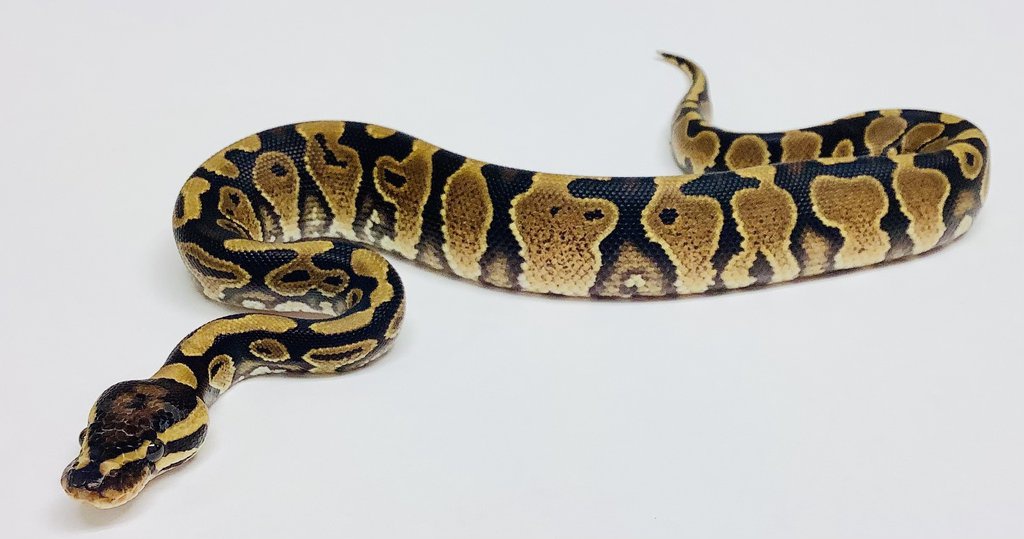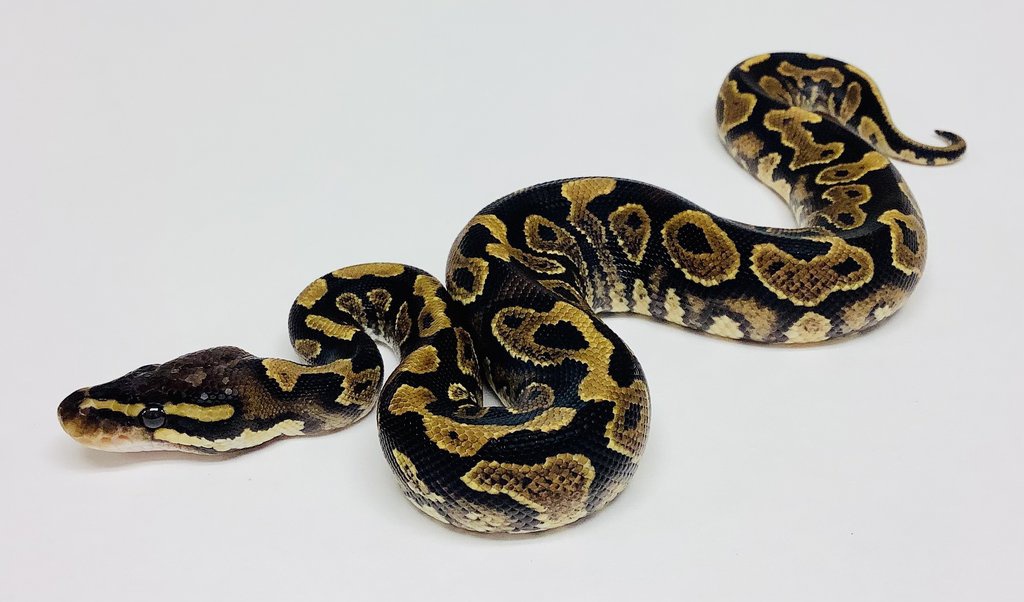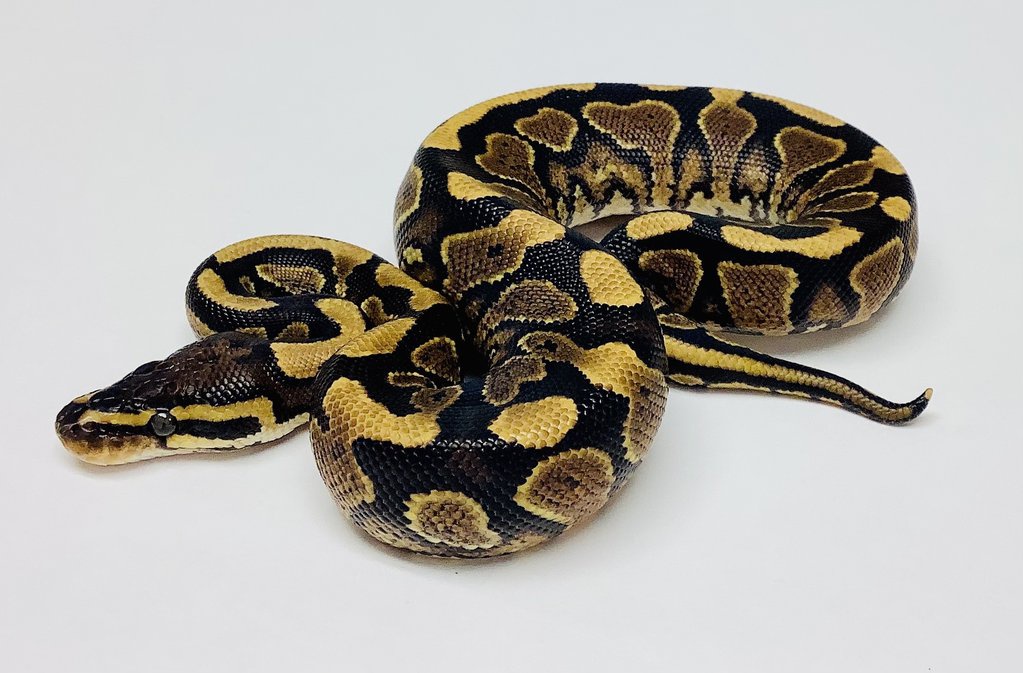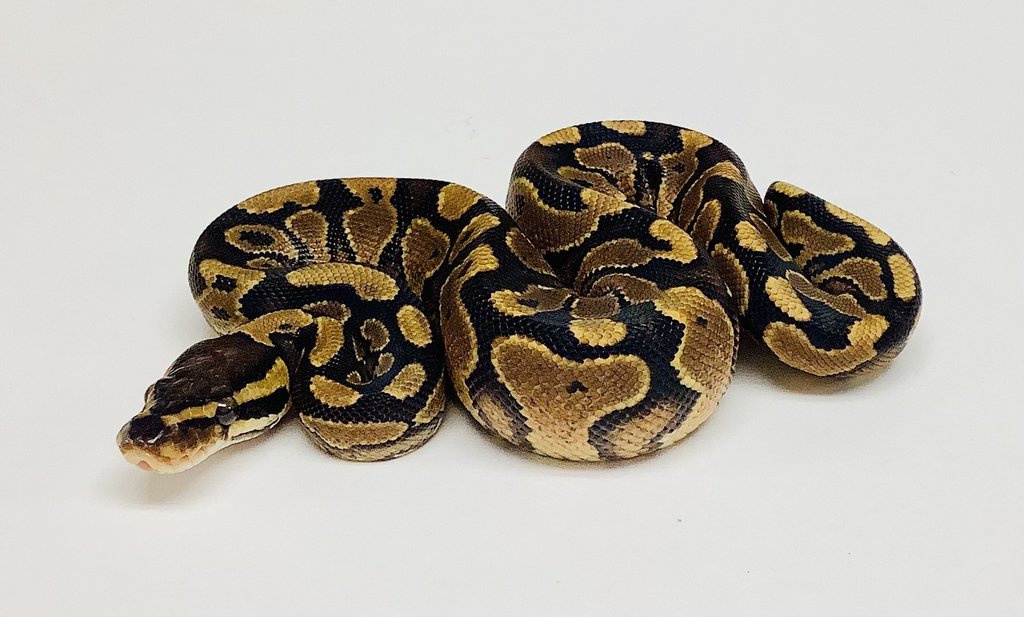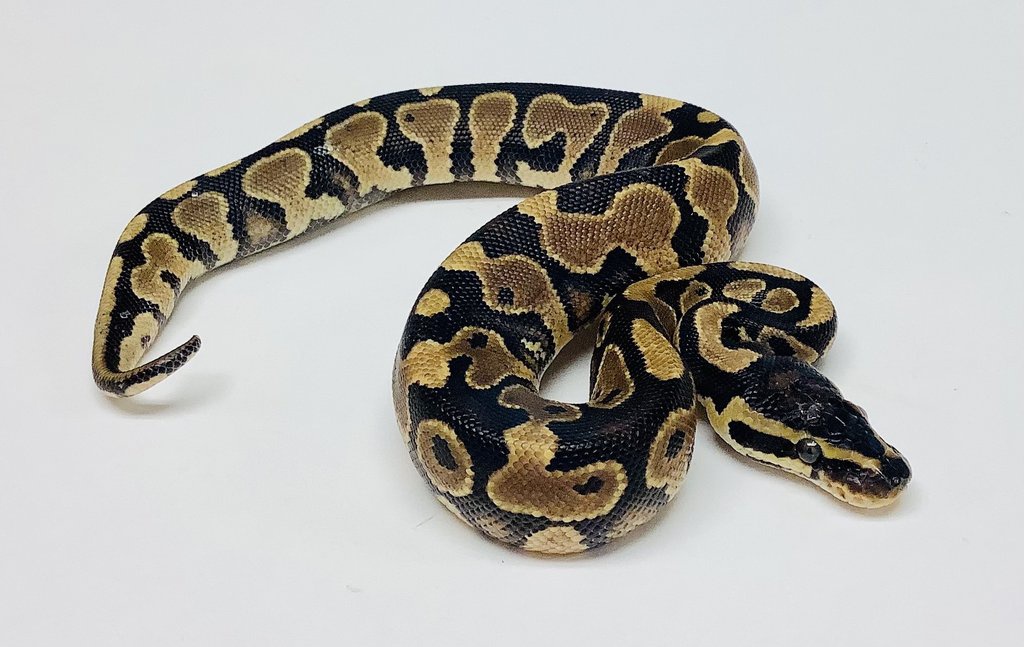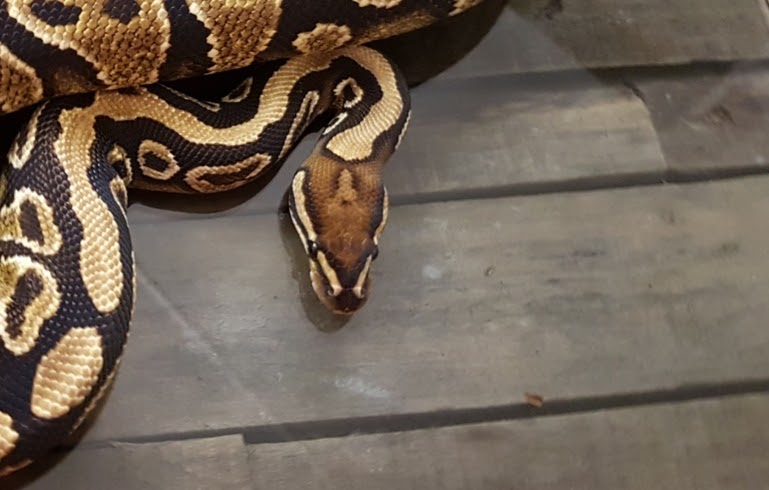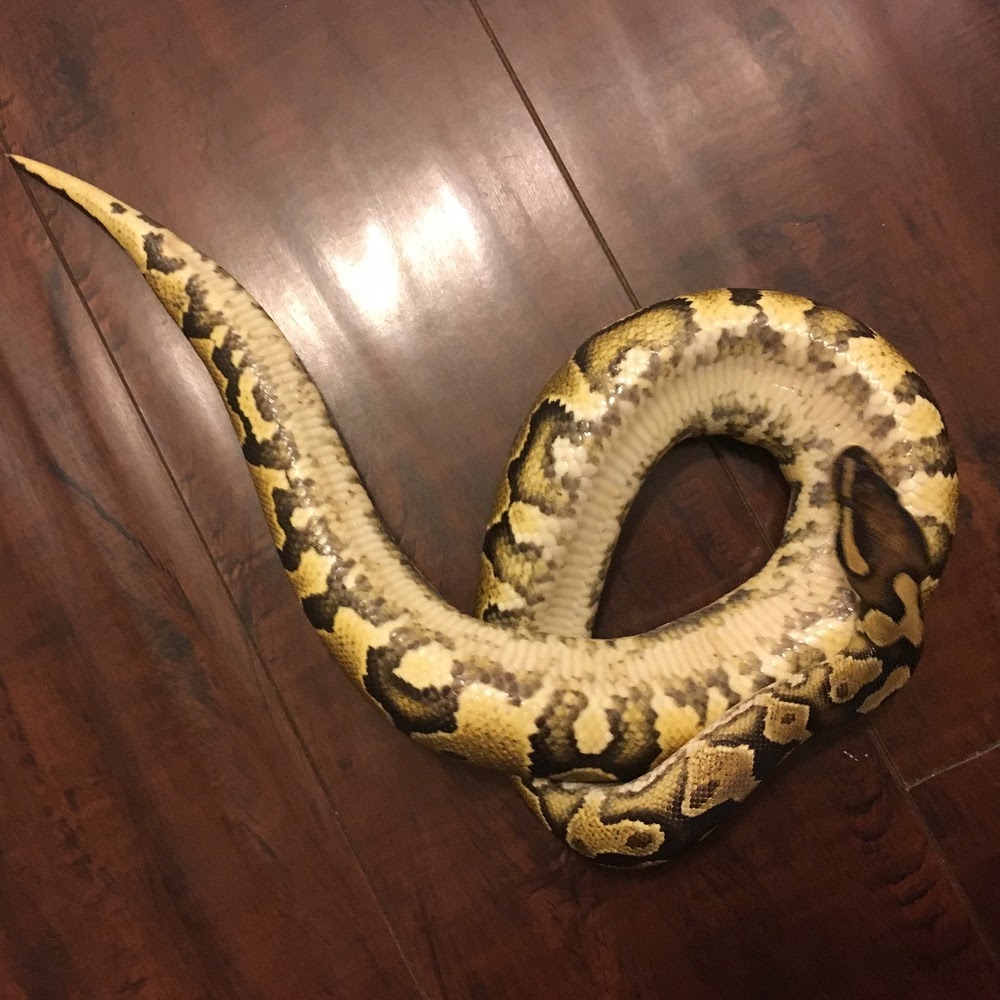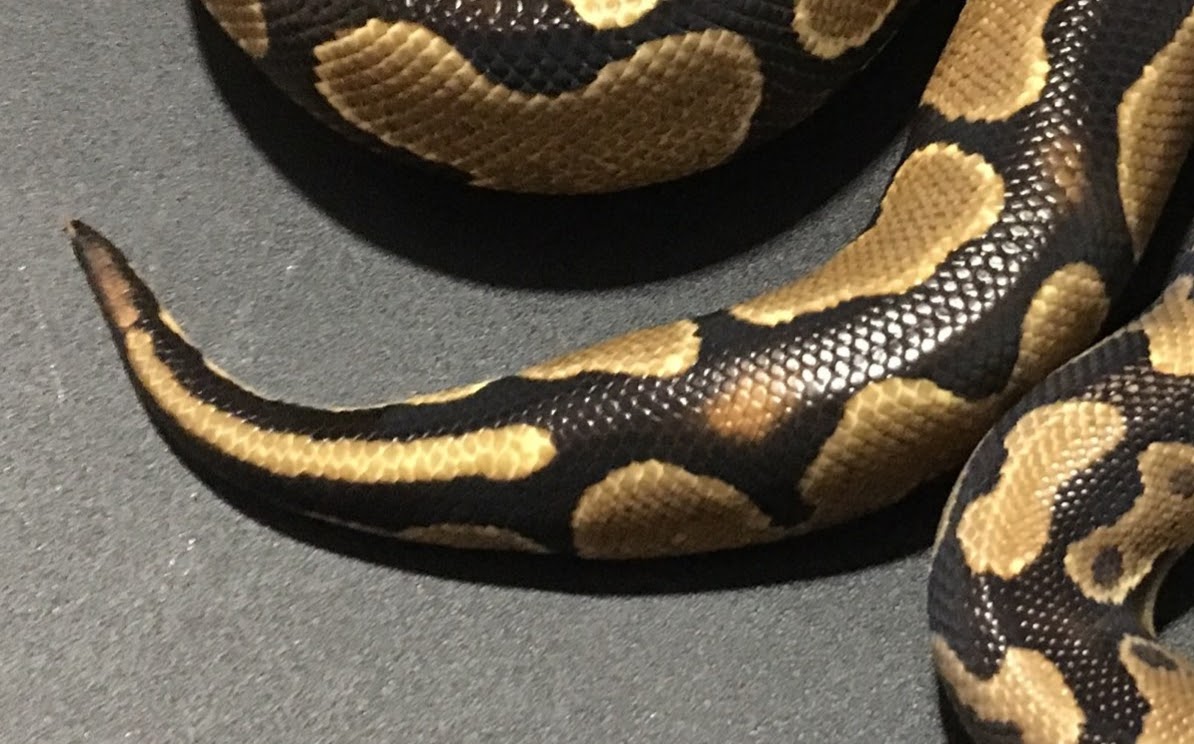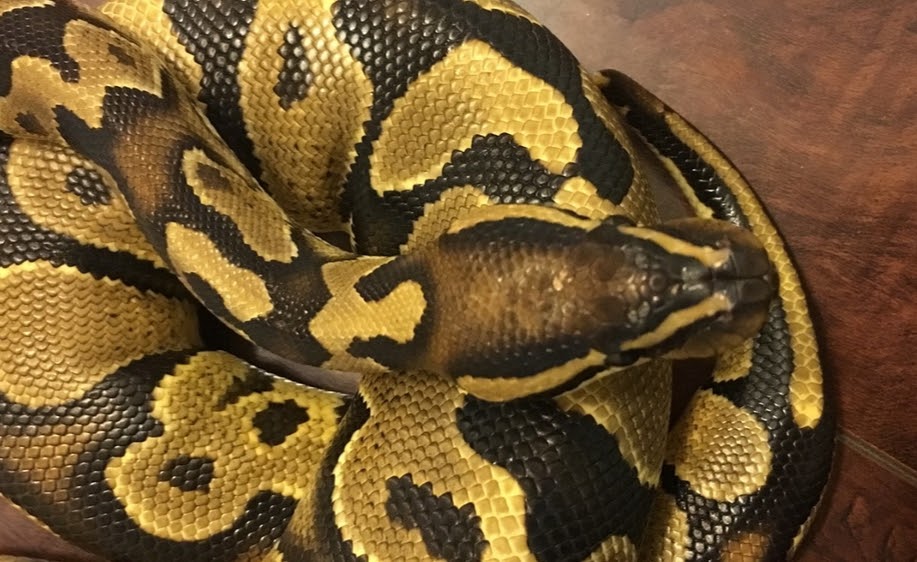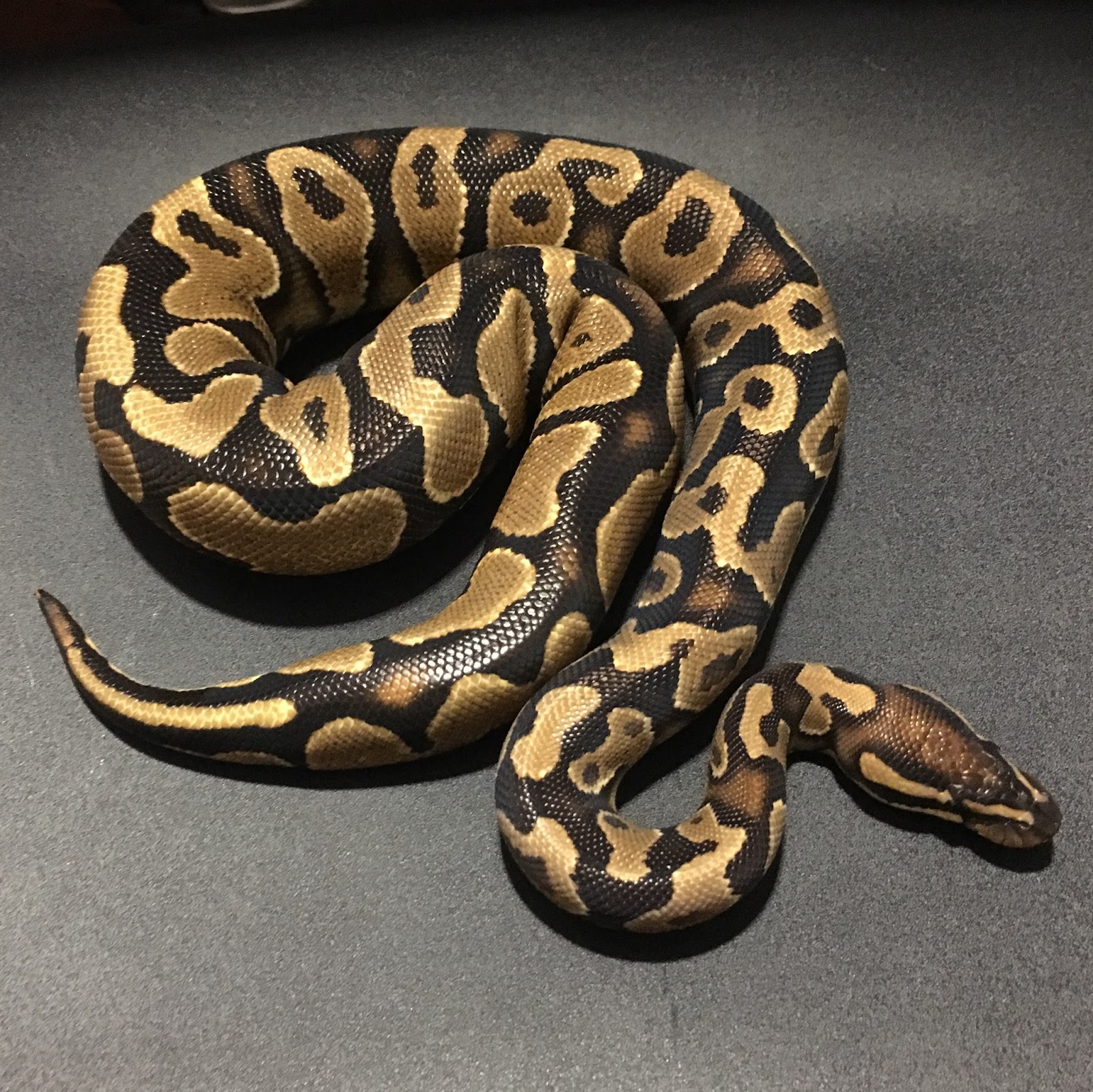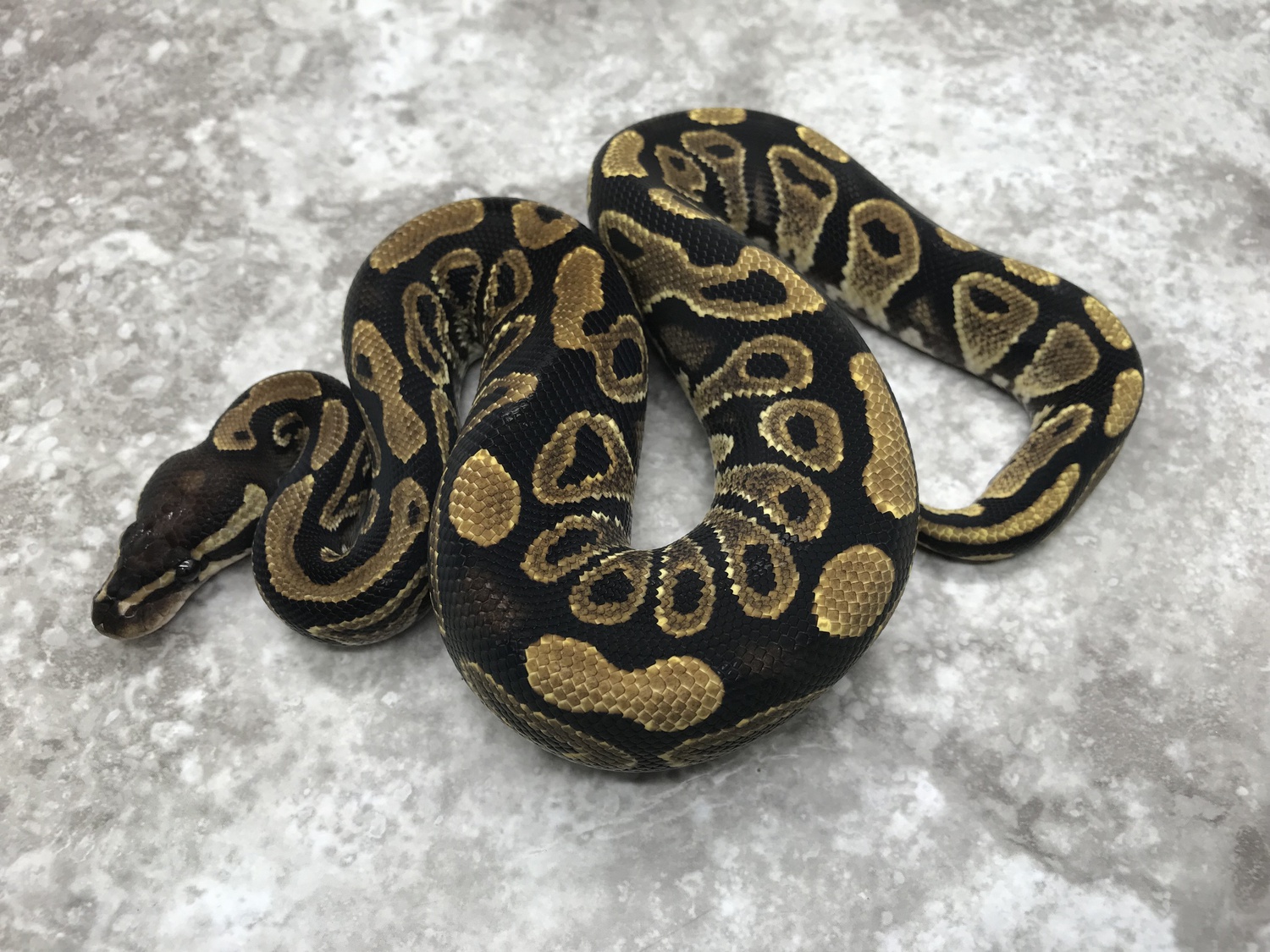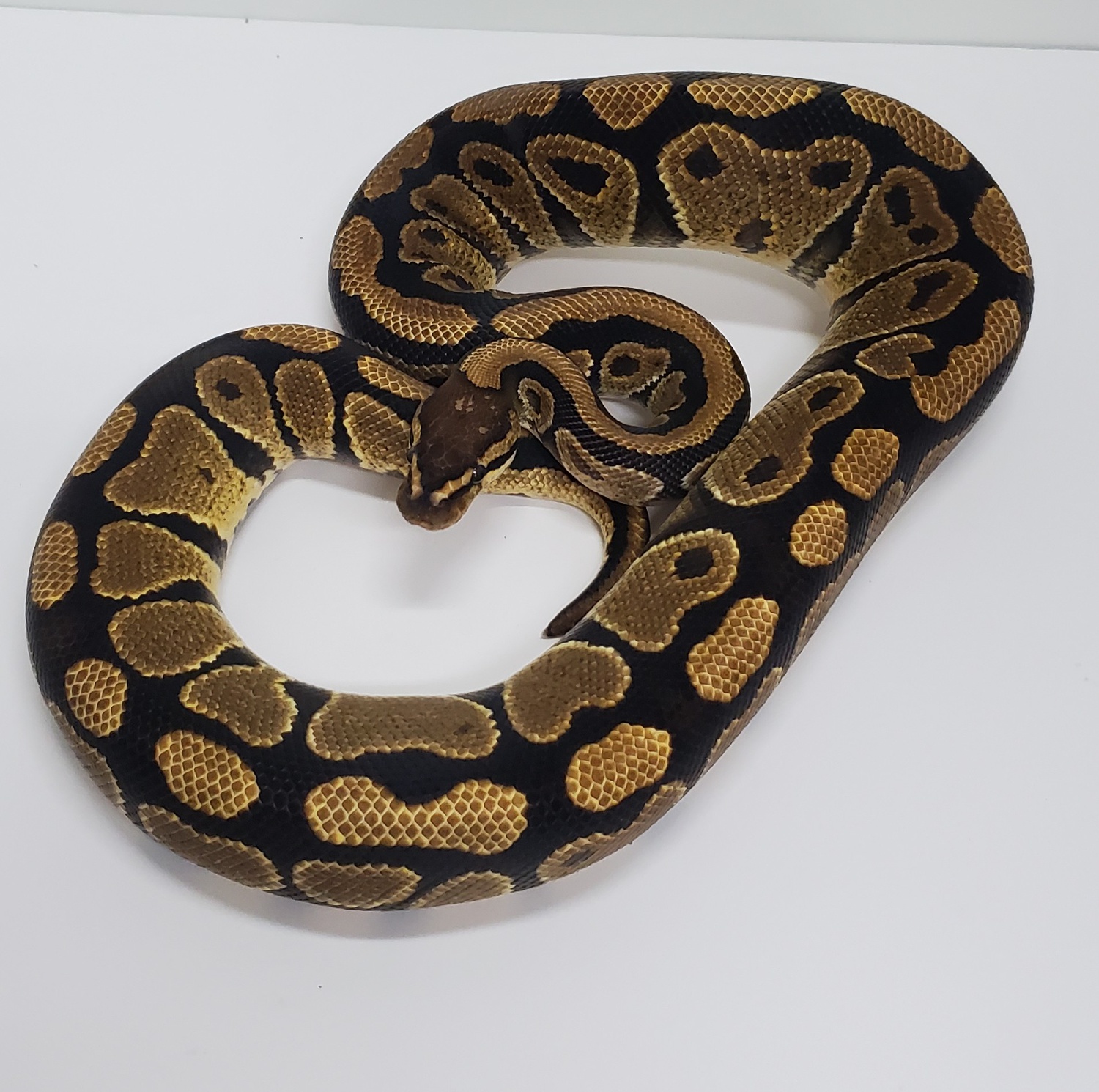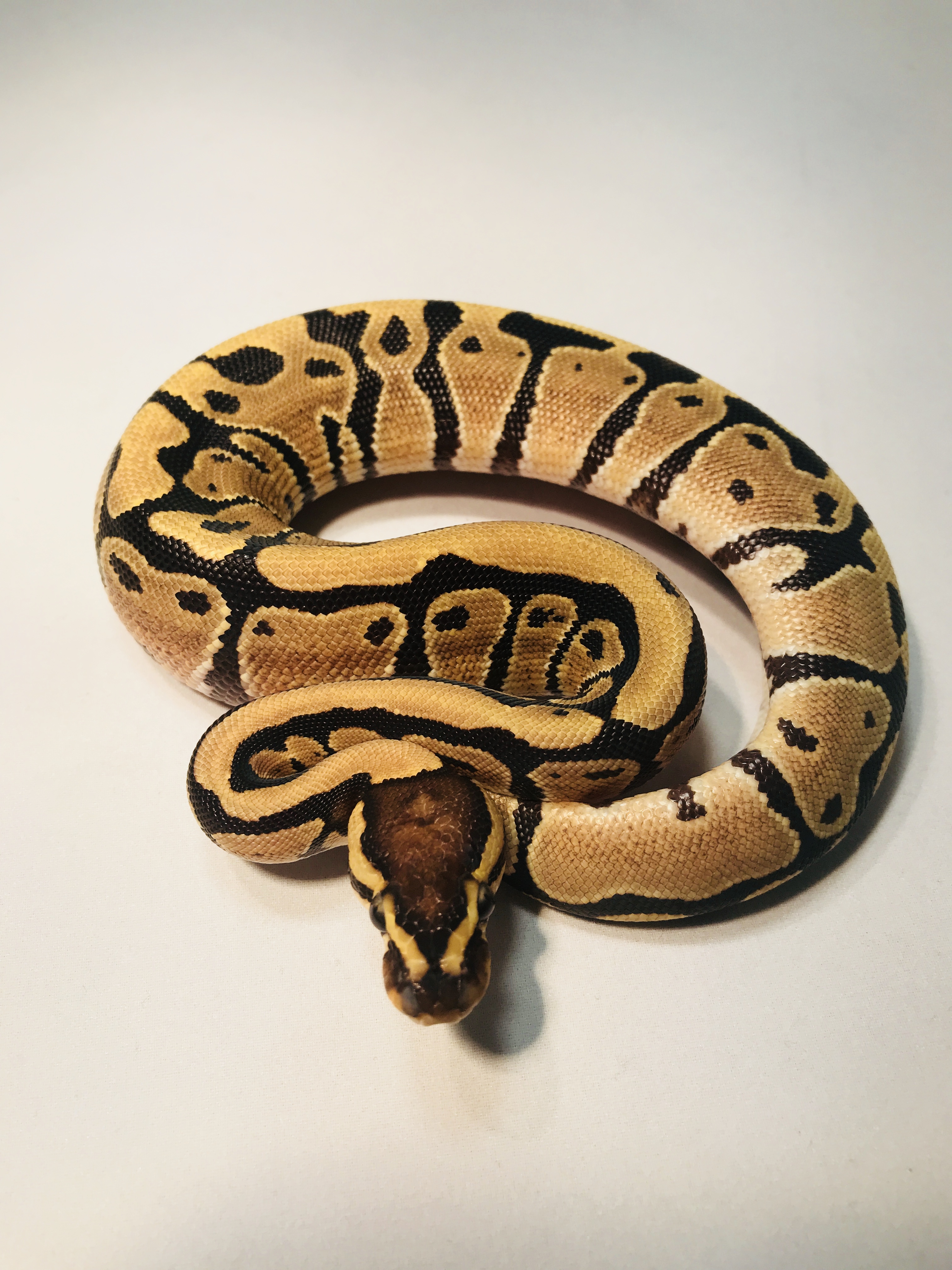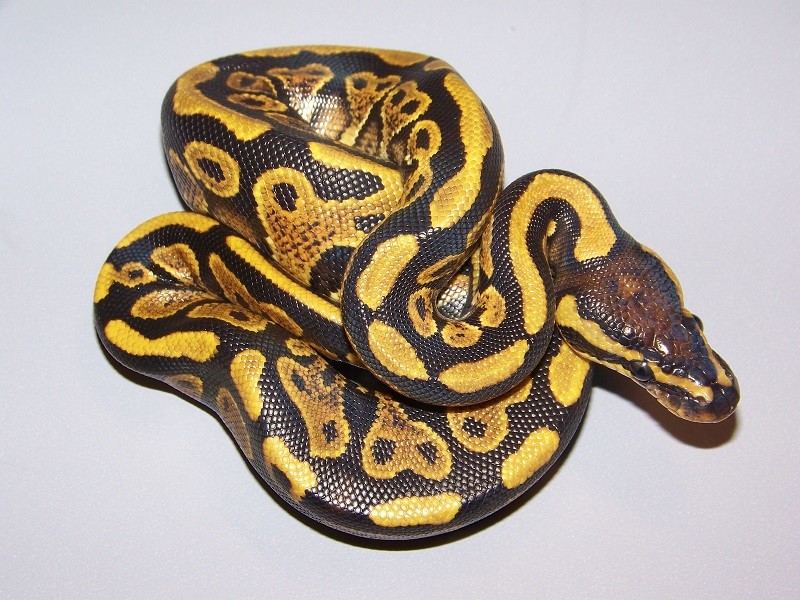Yellow Belly
Type: Incomplete Dominant
First Produced By: Amir Soleymani [1]
Complex: Super Stripe Complex
Aliases: YB, Bling Yellow Belly, Flare, Goblin, Orange Belly
First Produced In: 1999
Availability: Common
Last Updated: 2023-01-25
Do you have any suggestions or corrections for this article?
Click here to contribute feedback
About
The typical variations of a Yellow Belly from a Normal Ball Python are its rich coloration, head markings, belly flames, and a checkered pattern along the edges of the belly. Each of these characteristics may vary from one animal to the next.
History
Around 1997, Amir Soleymani spotted a odd looking ball python being sold as a Normal while at a reptile show, and by 1999, he had proven it was genetic. Six years after Amir’s initial purchase, The Snake Keeper (TSK) produced a clutch from a Yellow Belly X Yellow Belly pairing and when the they finally came out of the eggs, they were shocked to see a patternless creamy-white snake with a yellow stripe down its dorsal. This proved the Yellow Belly gene to be incomplete dominant.
Appearance
Head
The head of a Yellow Belly ball python is usually topped with a light tanned-brown crown, with a headstamp of light scales toward the back of the crown.
Body
The body of a Yellow Belly ball python tends to have rich colouration, making the black “puzzle-like” markings of a Normal Ball Python appear almost tanned. Strong “flames” can be seen between the “alien heads” coming up from the belly.
Belly
The Yellow Belly ball python usually displays a clean belly of patternless scales with checkered/motley edging, though spotting can occasionally happen. The “flames” that travel up the animal’s sides can be seen between markings. Despite its name, a ball python carrying the Yellow Belly gene does not necessarily have a yellow belly.
Tail
The tail of the Yellow Belly ball python is similar to that of the Normal ball python, but with the colouration of the Yellow Belly morph, usually coming to an end with a thick stripe or beading.
Proven Lines
- First Produced By: NERD
- First Produced In: Unknown
- First Produced By: Ralph Davis Reptiles (388790)
- First Produced In: 2003
- First Produced By: Royal Morphz
- First Produced In: 2010
History:
Royal Morphz - 06-2012: "A few years back I picked up a couple of dinker animals with all the hope in the world. I raised them up with my own theories as to what I thought they were. I spoke with some big breeders and most of my theories were squashed. In 2010 my 2 dinkers were ready to mate and they did just that. I patiently waits almost 60 days![]() and I was blessed with a lavender, peach and white snake. Then there were 2. I never knew what to call them so I dubbed them “The ODD Ones” but I am happy to announce them now as Solar Flare’s.
and I was blessed with a lavender, peach and white snake. Then there were 2. I never knew what to call them so I dubbed them “The ODD Ones” but I am happy to announce them now as Solar Flare’s.
I asked around and couldn’t get any input on them until I brought them with me to the NARBC show in the hopes I could show them to the Yellowbelly king Amir. He had to miss the show so I listened to a lot of other breeders opinion. Some were excited and some were mixed. Last year I didn’t make any supers but I made a few crosses.
In 2012 I put one of my 2010 males in with his mom and produced 1.2 more supers and they look awesome." [2]
- First Produced By: Unknown
- First Produced In: Unknown
Related Traits
One example of an allelic series in ball pythons is the Yellowbelly series of color morphs (Fig 1). This series is described by breeders as having five alleles ( yellowbelly , spark , specter , gravel , and asphalt ). Phenotypes in this series include a loss of coloration and coincident changes in patterning, which range from severe to mild (Fig 1A-B). Homozygotes of the strongest allele ( yellowbelly ) have skin that is almost fully white (leucism) (Fig 1B). The intermediate alleles ( spark and specter ) produce homozygotes with moderately lighter coloration compared to wildtype and a pair of dorsal, longitudinal stripes (Fig 1B). The weakest alleles ( gravel and asphalt ) produce homozygotes with mildly lighter coloration compared to wildtype and subtle alterations in patterning (Fig 1B). Compound heterozygotes show phenotypes intermediate between the parents, often including dorsal, longitudinal stripes (Fig 1D). These phenotypes are largely recessive, and heterozygotes of any of these alleles in combination with the wildtype allele are difficult to distinguish from wildtype (Fig 1F). Some heterozygotes have slightly lighter underbellies compared to wildtype (Figs 1E and 1F), but this phenotype is variable and difficult to recognize, especially for alleles other than the yellowbelly allele. [3]
Animals described as carrying the gravel or asphalt alleles of the Yellowbelly series show the mildest loss of coloration of all morphs in the series (Fig 1B). We therefore predicted that the gravel and asphalt alleles might represent variants in EDNRB1 with mild effects on gene function. [4]
Animals described as carrying the spark or specter alleles of the Yellowbelly series show a more moderate loss of coloration than animals described as yellowbelly homozygotes (Fig 1B). We therefore predicted that the spark and specter alleles might represent variants in EDNRB1 that reduce gene function to a lesser degree than do the 1-bp and 17-bp deletions. [5]
Combos
- Angel Of Death (Fire Granite Hidden Gene Woma Pastel Yellow Belly)
- Black Oreo Blizzard (Black Pastel Calico Pastel Yellow Belly)
- Bumble Belly (Pastel Spider Yellow Belly)
- Bush Fire (Cinnamon Fire Spider Yellow Belly)
- Butter Belly (Butter Yellow Belly)
- Cheetah (Leopard Pastel Spider Yellow Belly)
- Chocolate Peanut Butter Oreo Blizzard (Black Pastel Calico Yellow Belly)
- Cinna Belly (Cinnamon Yellow Belly)
- Cinnamon Oreo Blizzard (Calico Cinnamon Pastel Yellow Belly)
- Cinny Ferno (Cinnamon Granite Hidden Gene Woma Pastel Yellow Belly)
- Dirt Road (Asphalt Cinnamon Spider Yellow Belly)
- Ebony (Granite Yellow Belly)
- Ellie Ball (Super Yellow Belly Hidden Gene Woma)
- Enchiferno (Enchi Granite Hidden Gene Woma Pastel Yellow Belly)
- Freeway (Asphalt Yellow Belly)
- Havoc (Pinstripe Spotnose Yellow Belly)
- Highway (Gravel Yellow Belly)
- Hot Sauce (Sauce Yellow Belly)
- Inferno (Granite Hidden Gene Woma Pastel Yellow Belly)
- Mephisto (Coffee Lucifer Yellow Belly Fader)
- Oreo Blizzard (Black Pastel Calico Pastel Yellow Belly)
- Orion (Granite Hidden Gene Woma Specter Yellow Belly)
- Pewter Belly (Cinnamon Pastel Yellow Belly)
- Puma (Spark Yellow Belly)
- Pumpkin Pied (Yellow Belly Piebald)
- Red Spectrum (Granite Hidden Gene Woma Lesser Pastel Yellow Belly)
- Static Electricity (Pastel Static Yellow Belly)
- Sterling Yellow Belly (Super Pastel Cinnamon Yellow Belly)
- Super Glow (Specter Yellow Belly Ghost)
- Super Inferno (Super Pastel Granite Hidden Gene Woma Yellow Belly)
- Super Stripe (Specter Yellow Belly)
- Superferno (Super Pastel Granite Hidden Gene Woma Yellow Belly)
- Ultra Fly (Super Pastel Fire Yellow Belly)
- Ultrafly (Super Pastel Fire Yellow Belly)
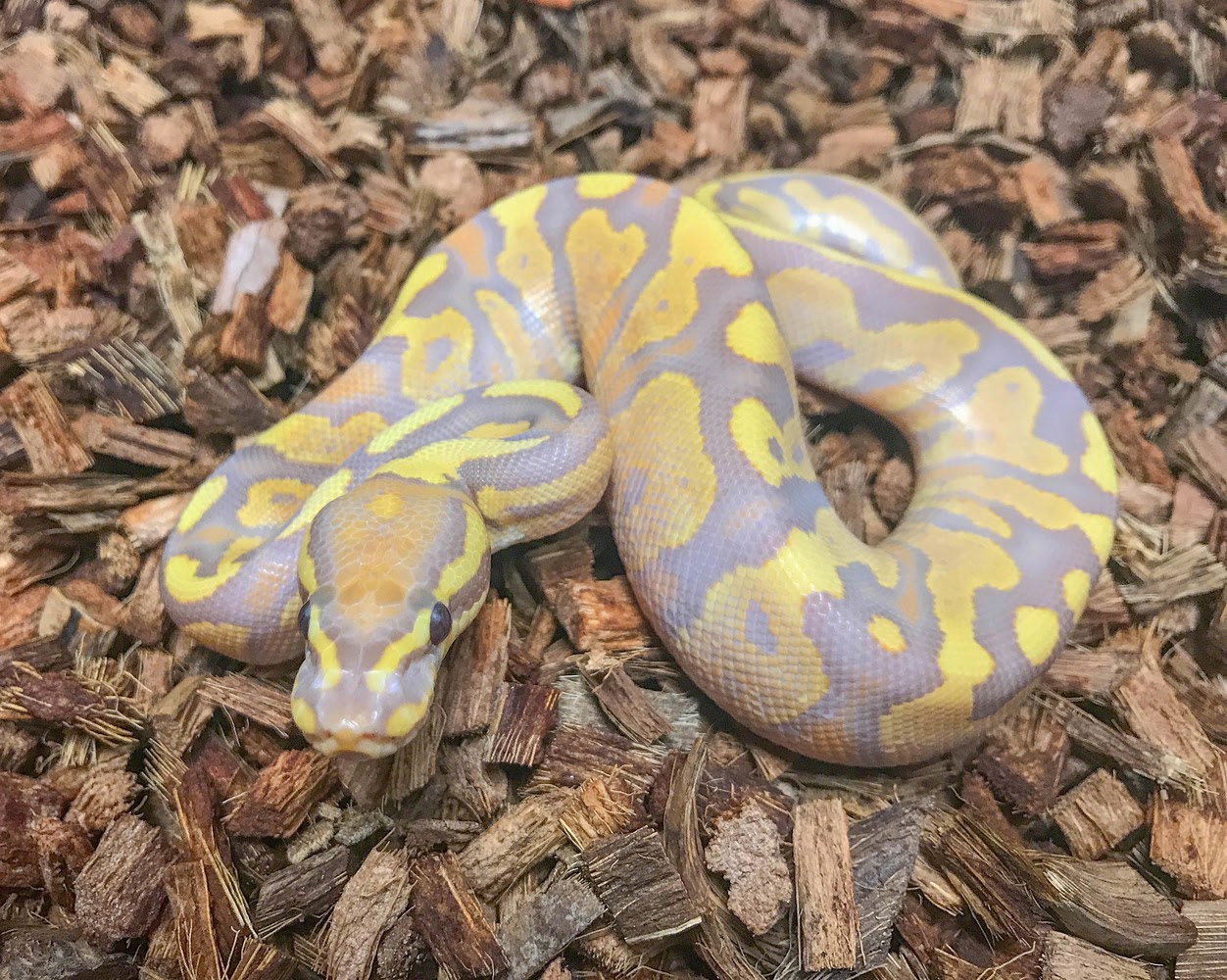
Fire Yellow Belly Ultramel By On the Ball Pythons
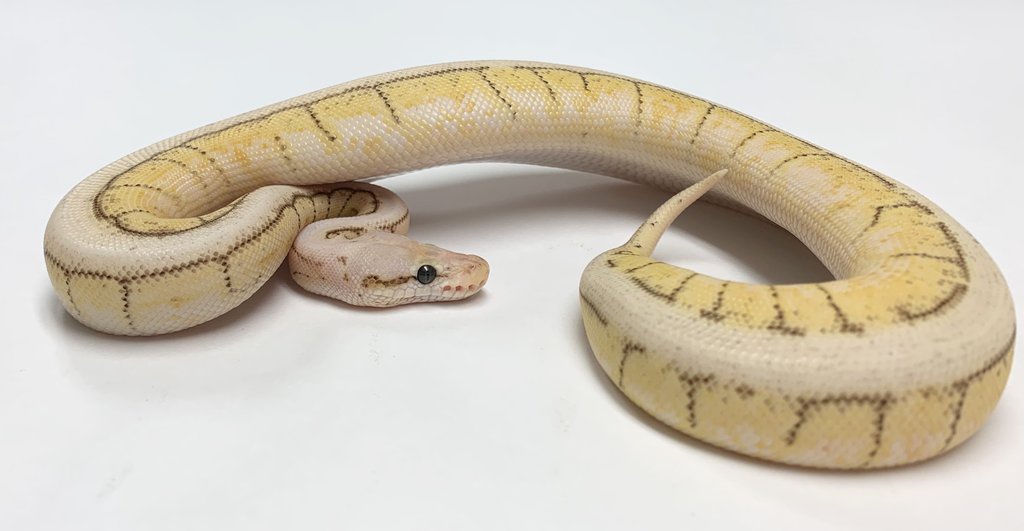
Spinnerblast Yellow Belly Het Russo Ball Python by BHB Reptiles
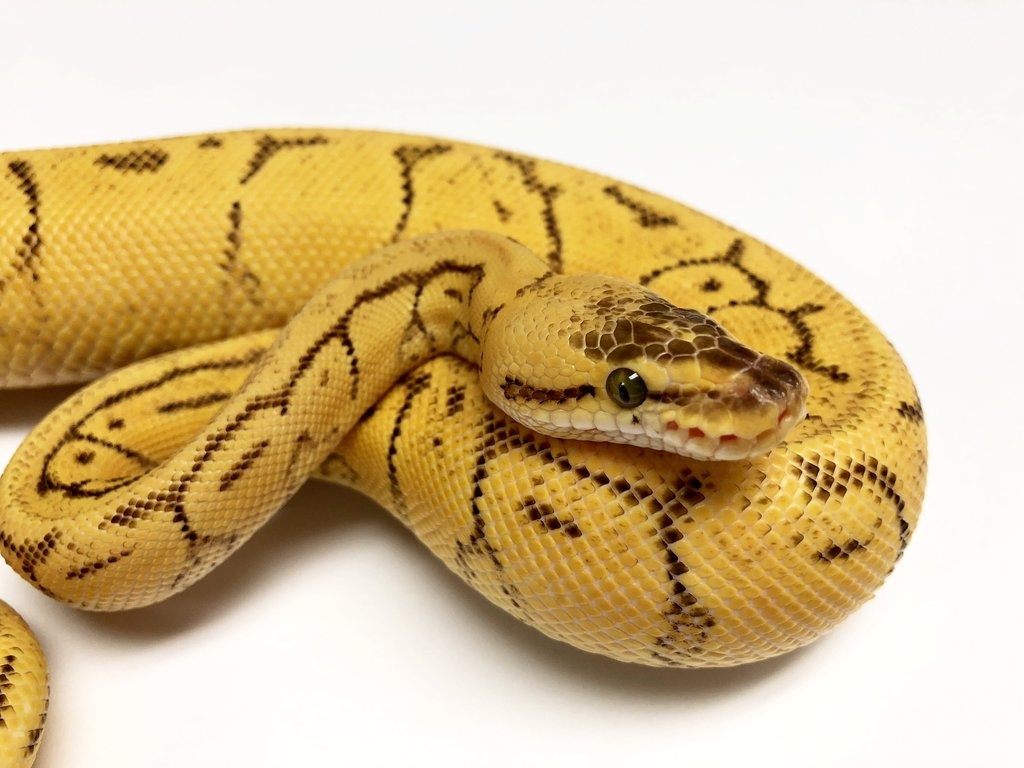
Firefly Pinstripe Enchi Yellow Belly Ball Python by BHB Reptiles
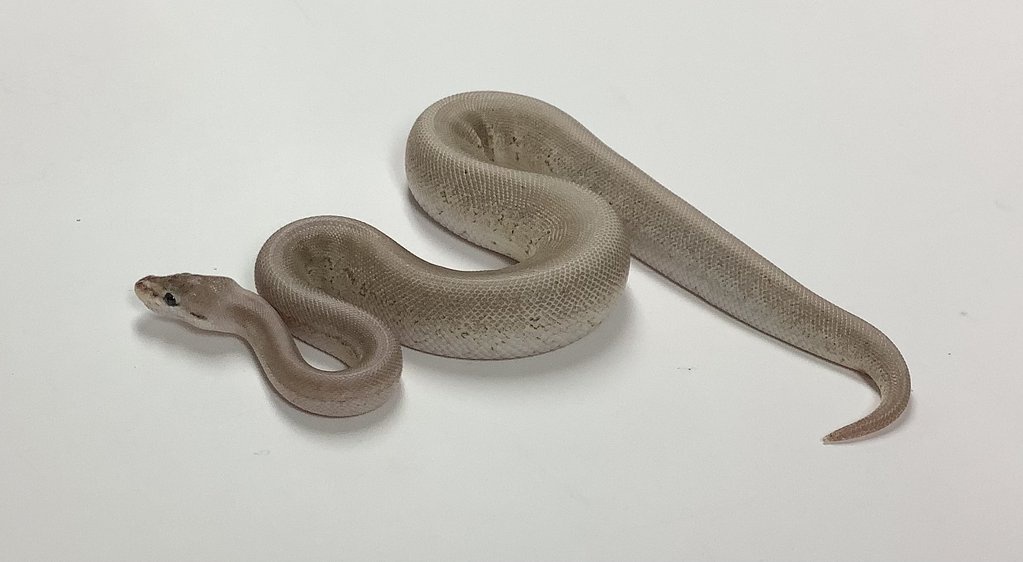
Spinner Super Stripe Ball Python by BHB Reptiles
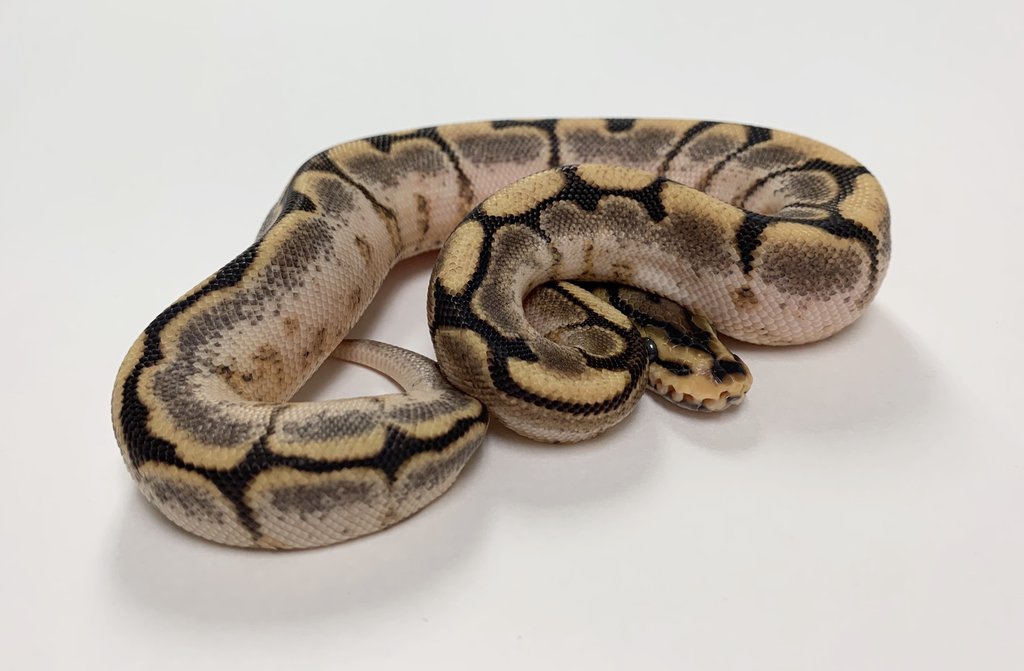
Calico Spider Yellow Belly Ball Python by BHB Reptiles
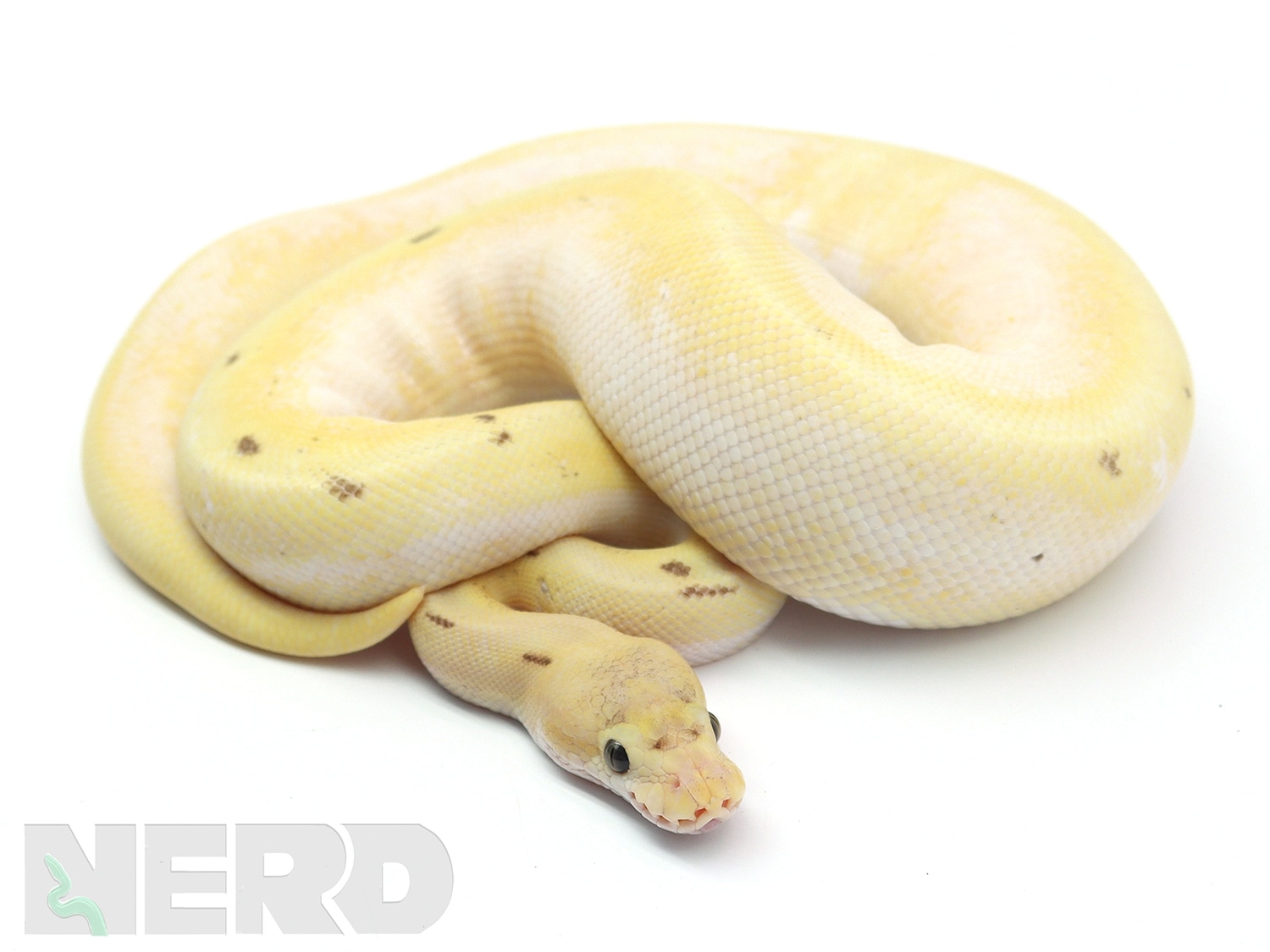
2019 Female Enchi Spinnerblast Orange Dream YellowBelly Malum Piebald Ball Python by New England Reptile Distributors
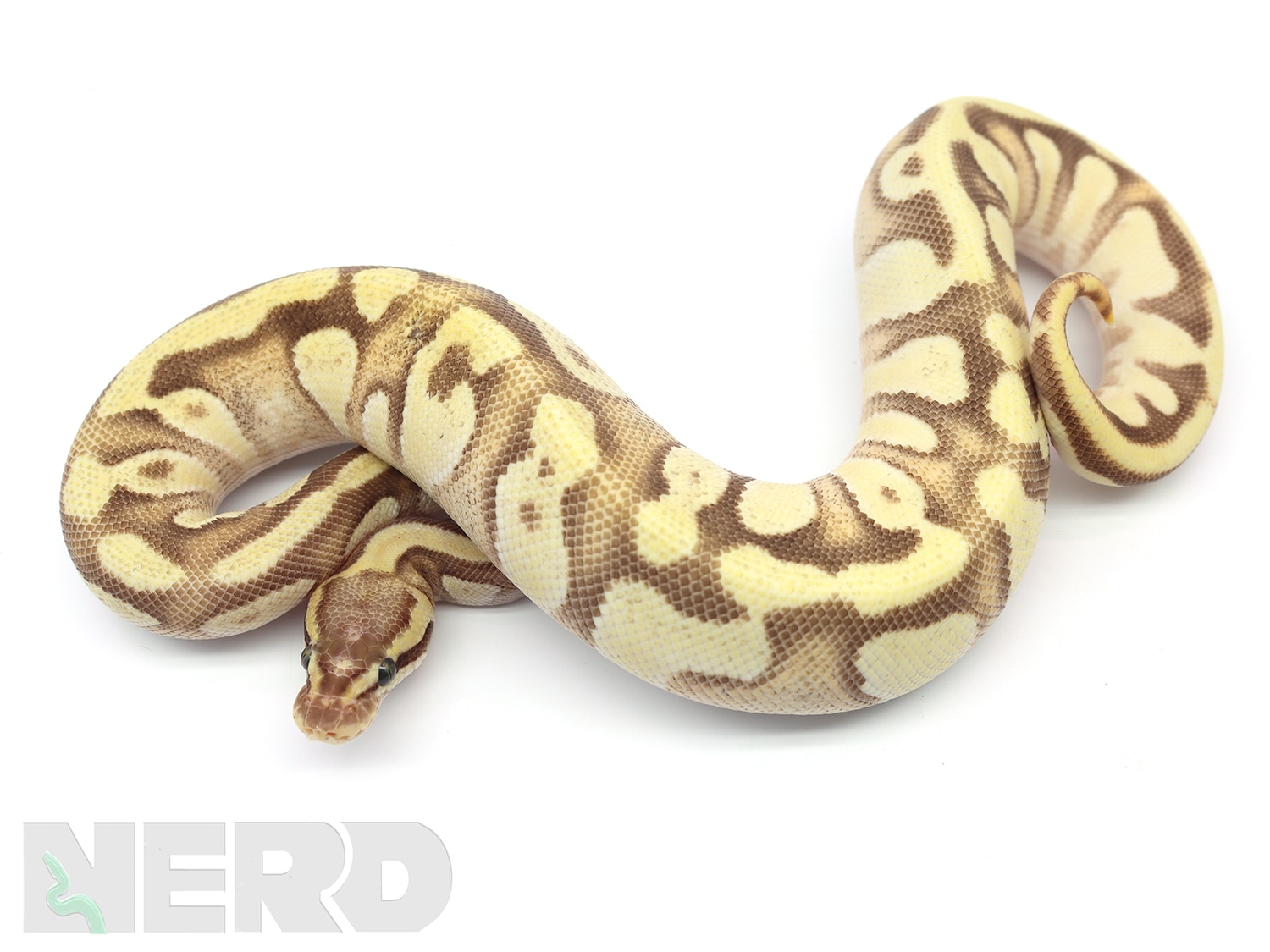
2019 Male Pastel Enchi Yellowbelly Orange Dream Odium Ball Python by New England Reptile Distributors
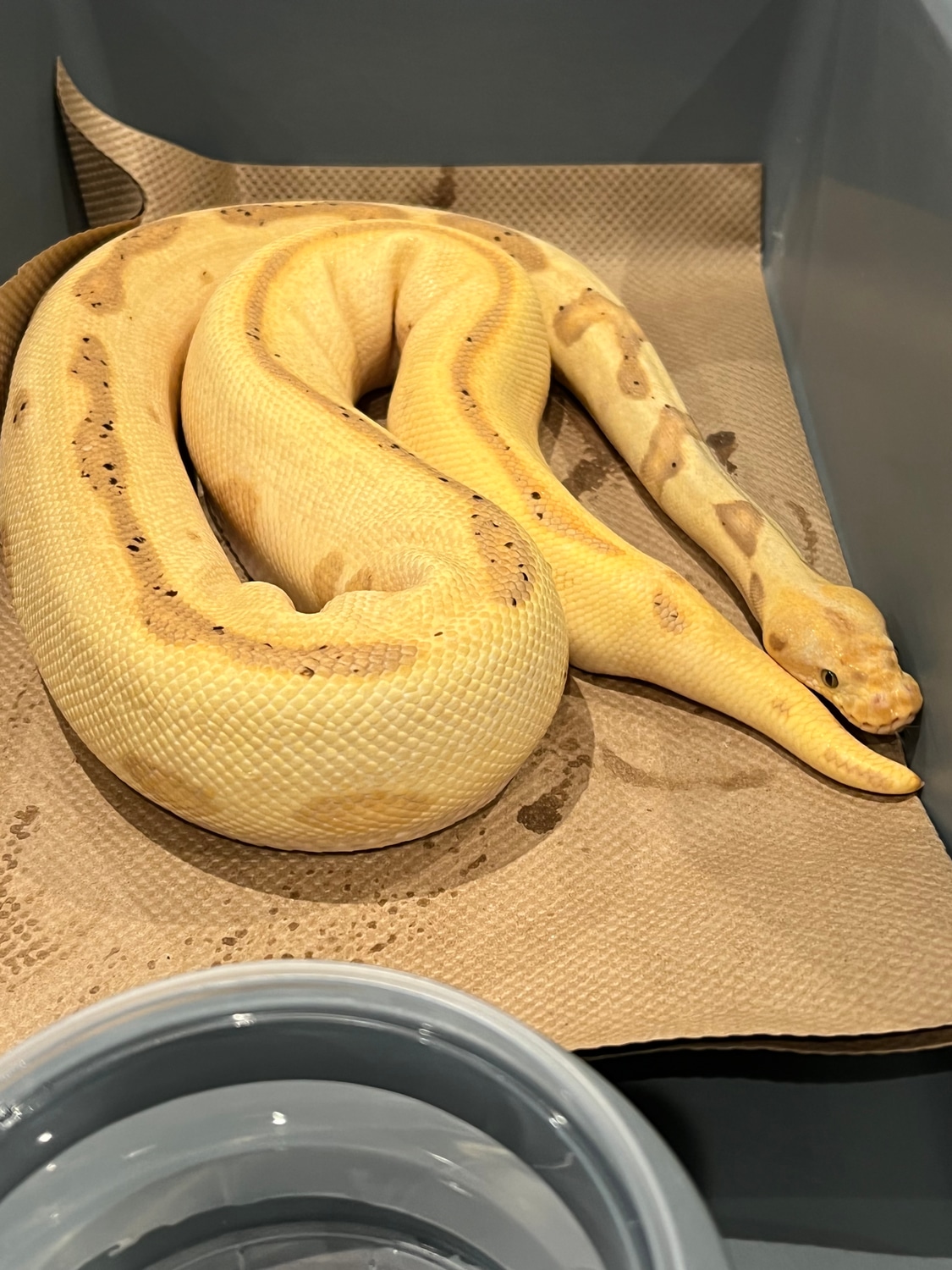
Banana Enchi Leopard Clown Possible YB Poss Het Pied Ball Python by Str8Fire Reptiles
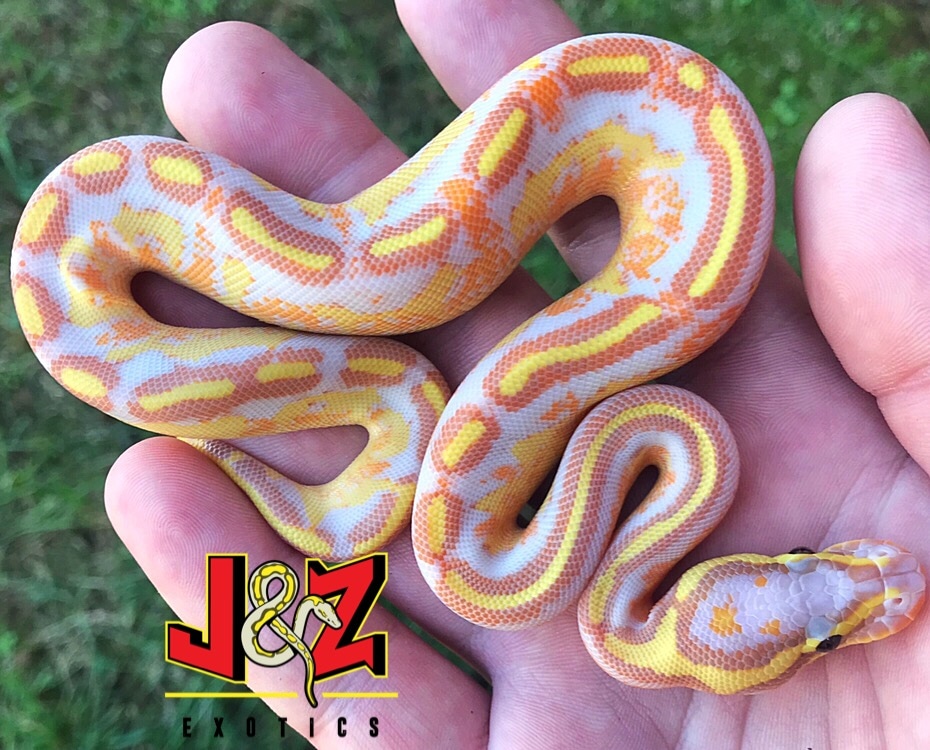
Banana Mardi Gras Ball Python by J & Z's Exotics
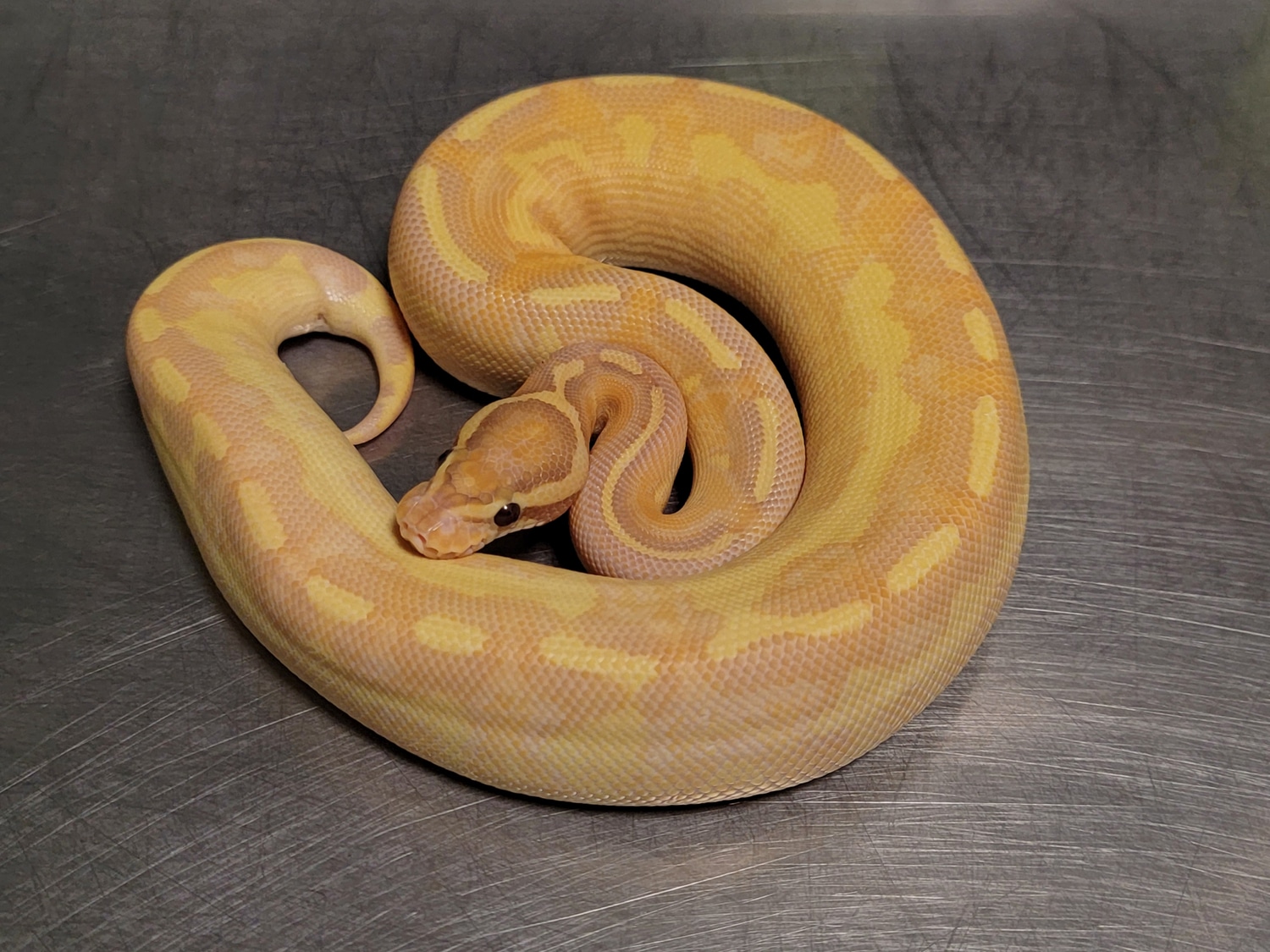
Banana Mardigras Ball Python by Hulker's Herps
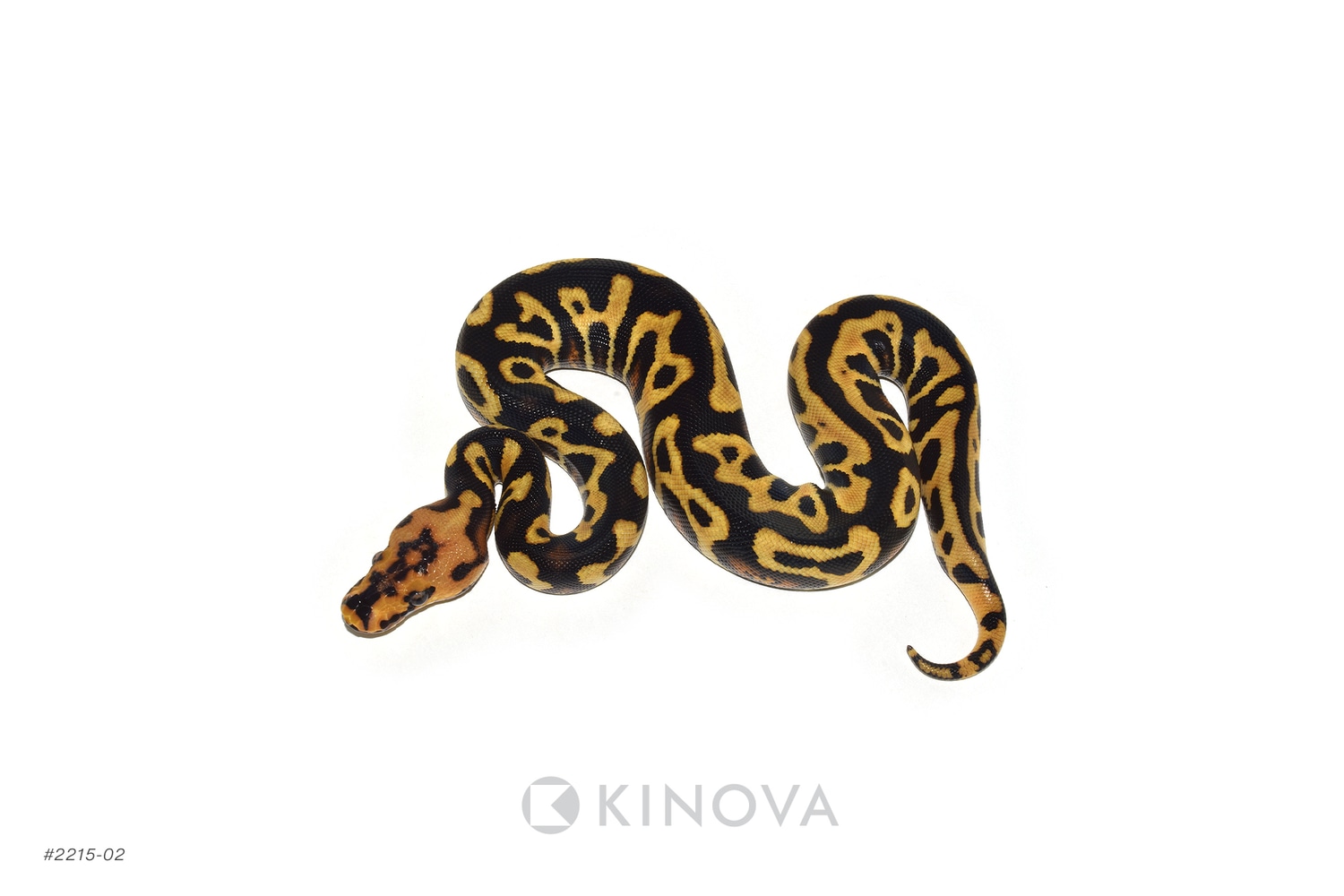
Chocolate Spotnose YB Clown Ball Python by KINOVA
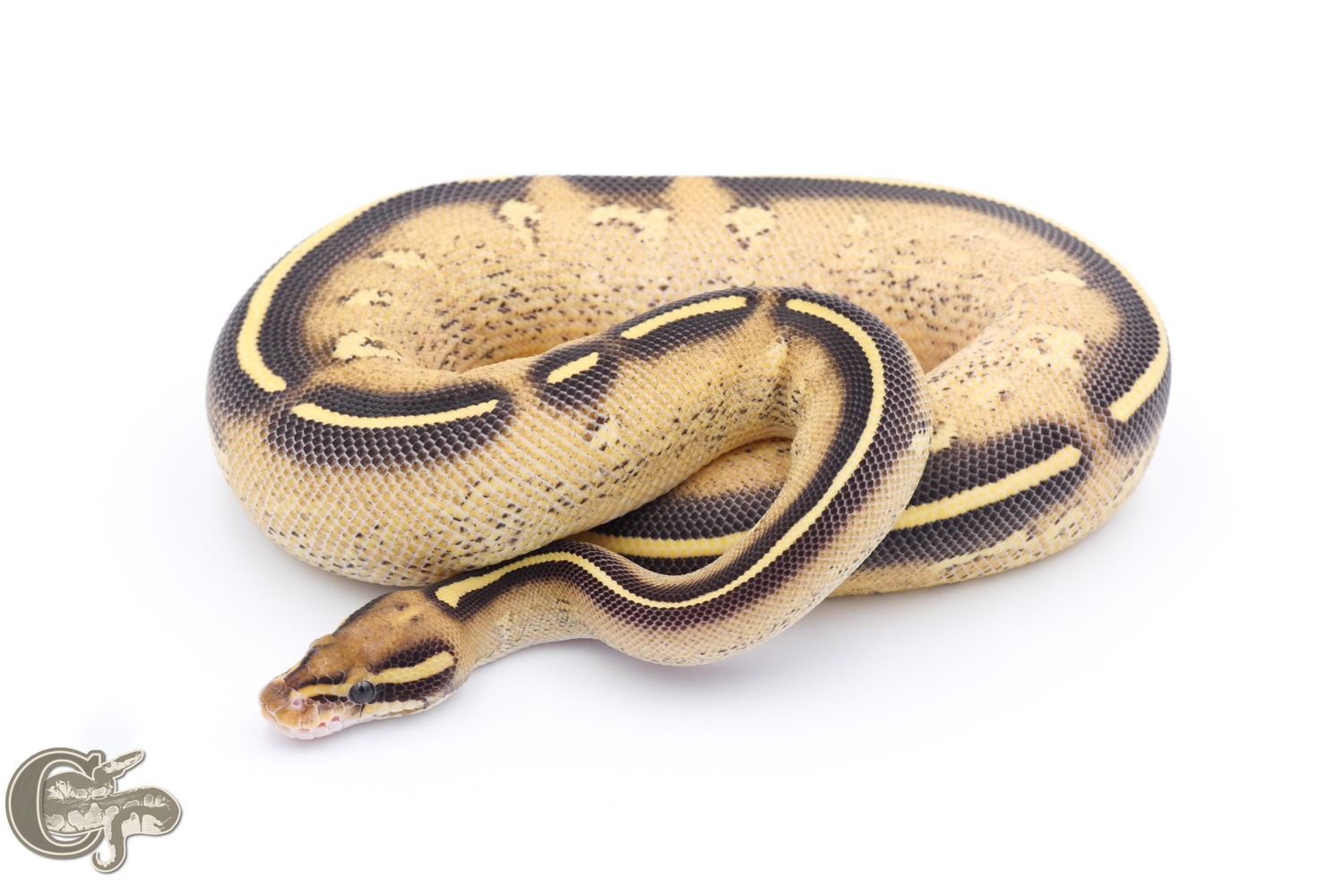
Desert Ghost Freeway Ball Python by Capital Reptiles
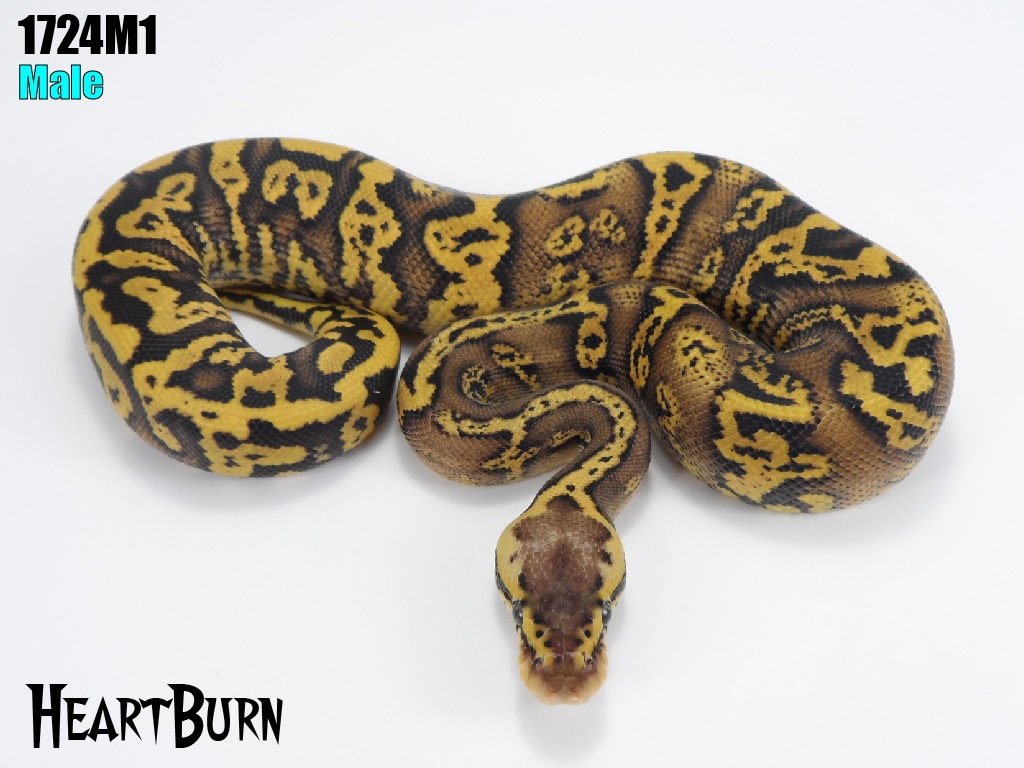
HeartBurn Ball Python by J-Royals Reptiles

20160819104705-128-MaleMephisto-1500x1500s
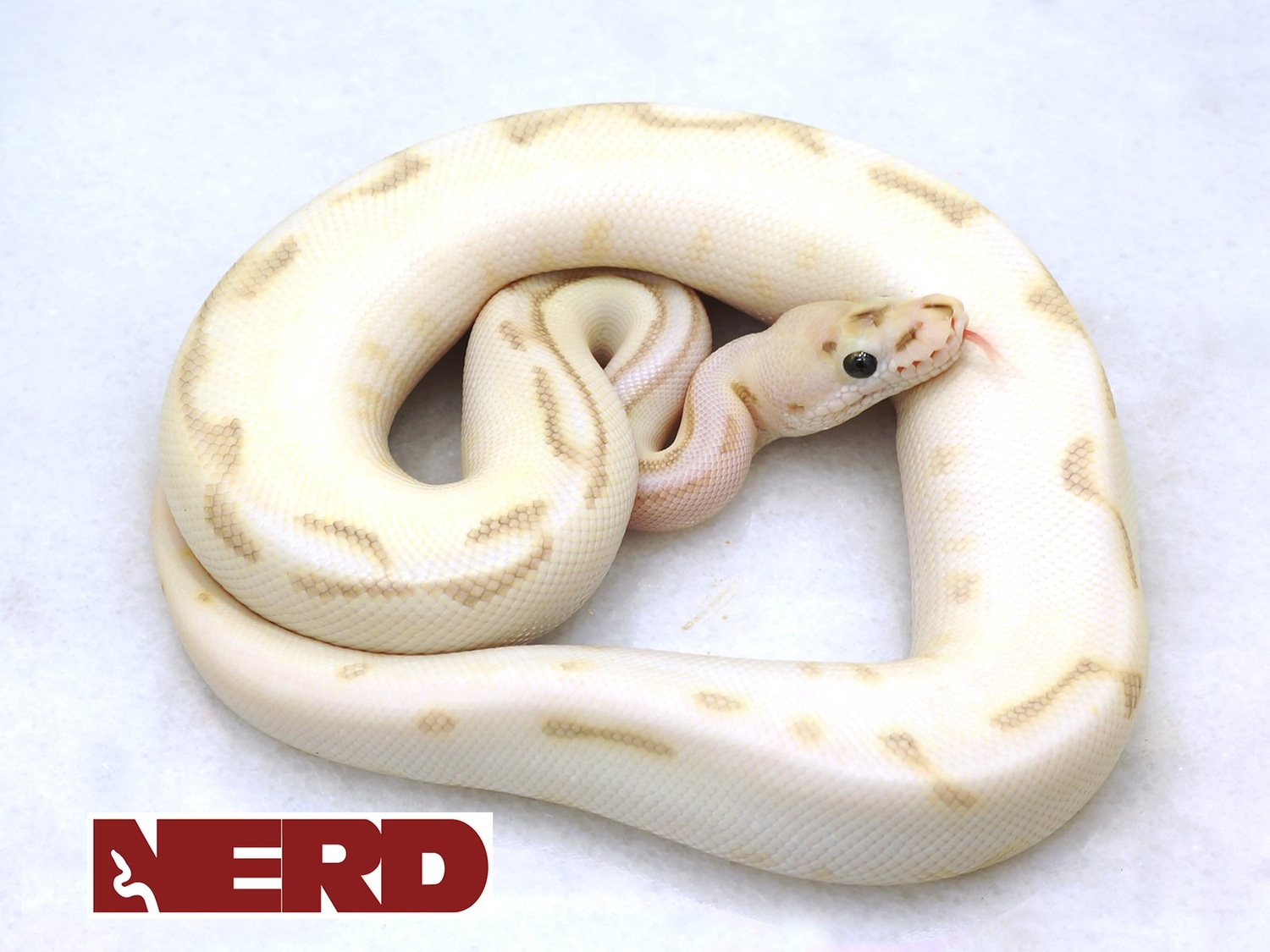
20180929090702.204-18BAPY00012_1024x102-1500x1500s
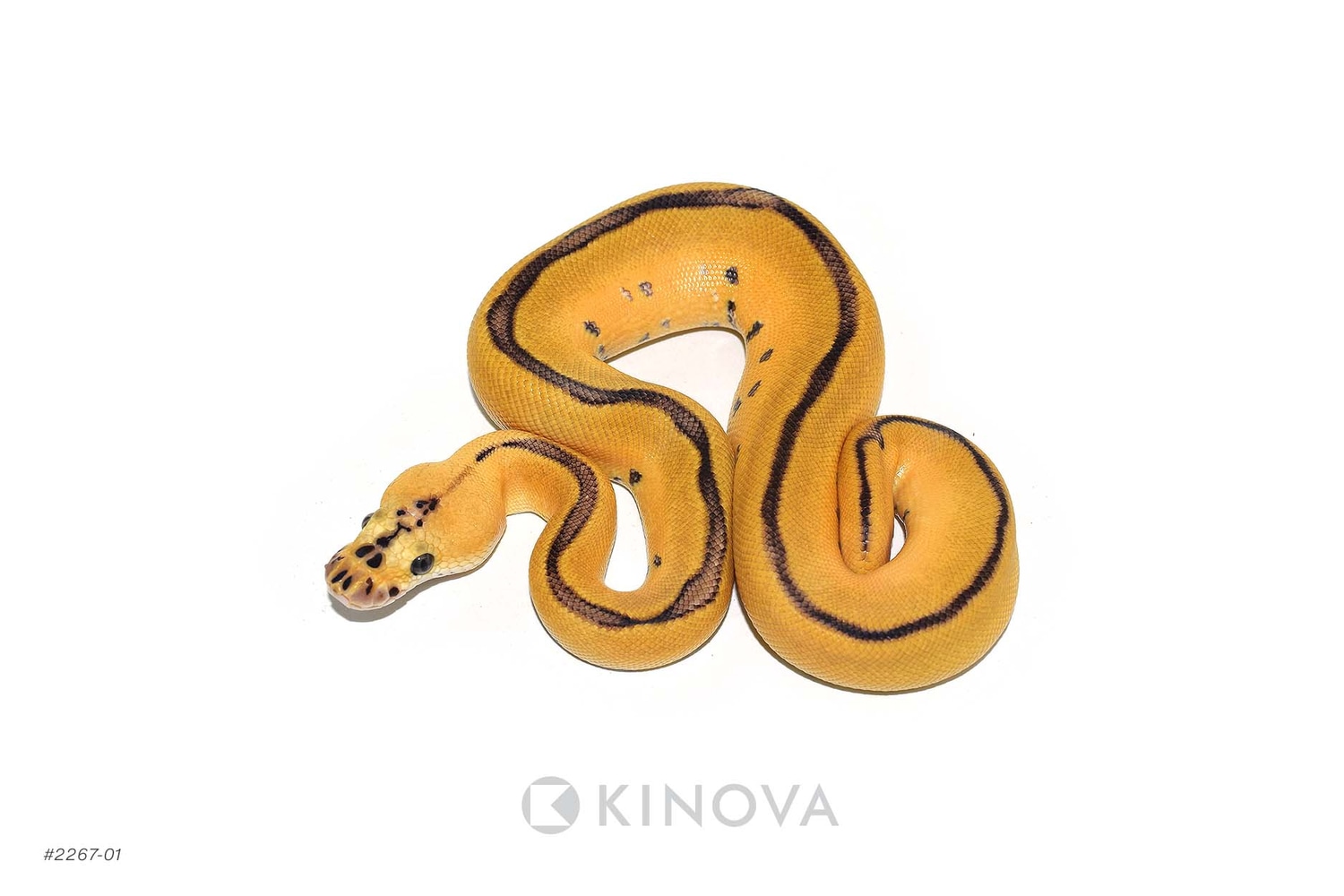
Pastel Enchi YB Leopard Clown Het Desert Ghost (Possible Redstripe) Ball Python by KINOVA
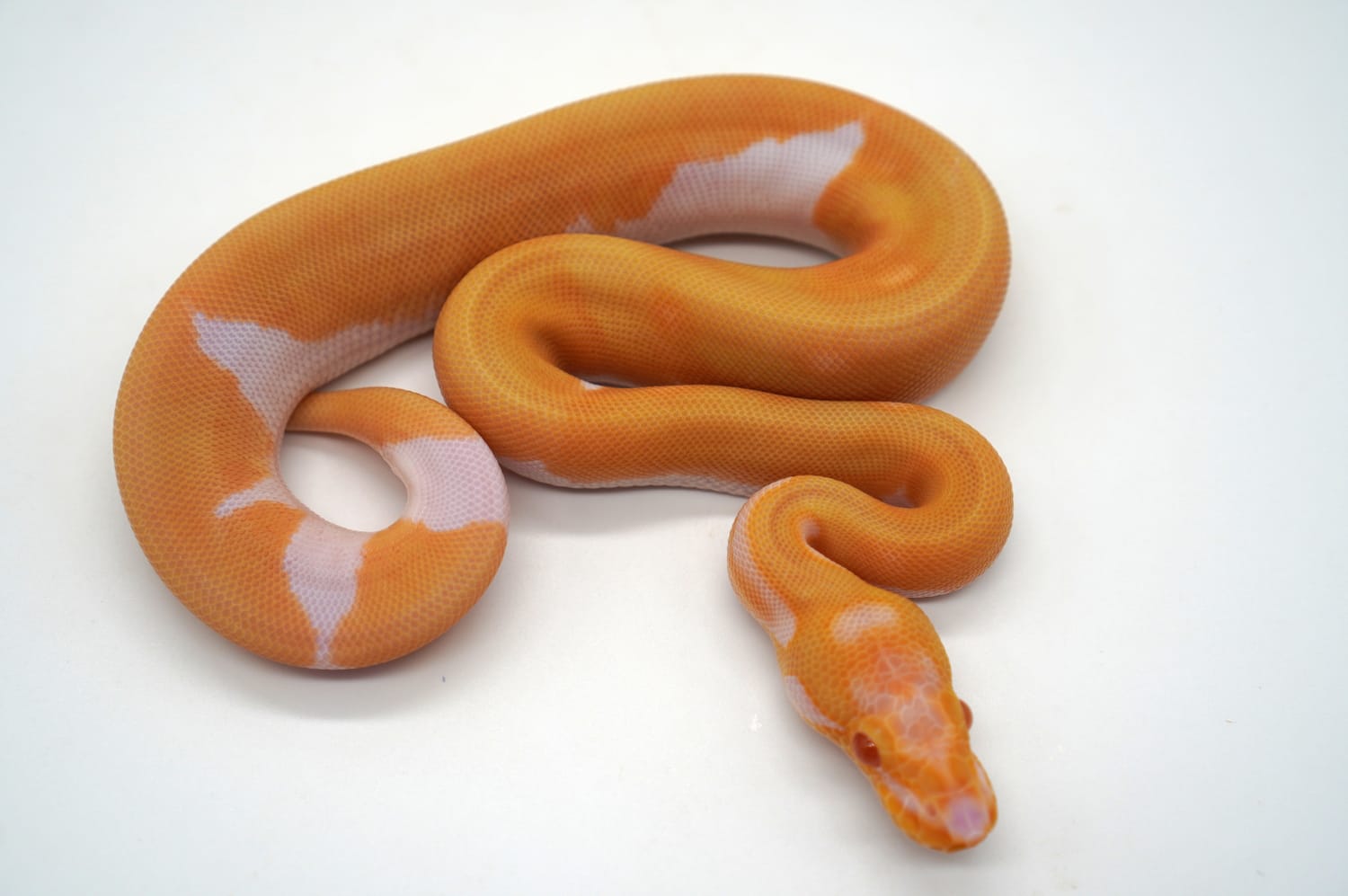
Super Orange Dream YB Enchi Leopard Pastel Candino Pied Ball Python by Ozzy Boids LLC
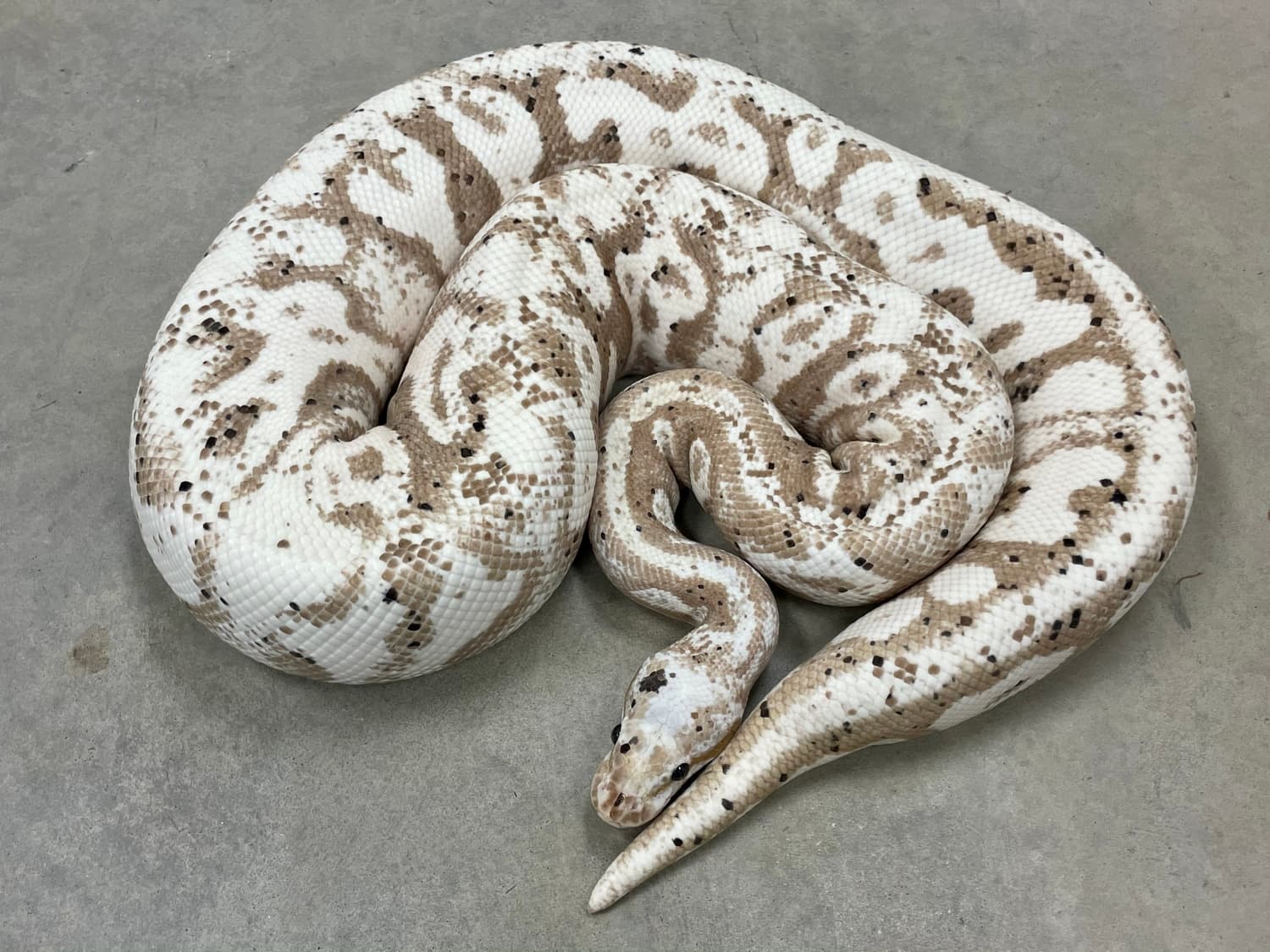
Super Pastel Banana Yellowbelly Het Puzzle Ball Python by Balthozar, LLC
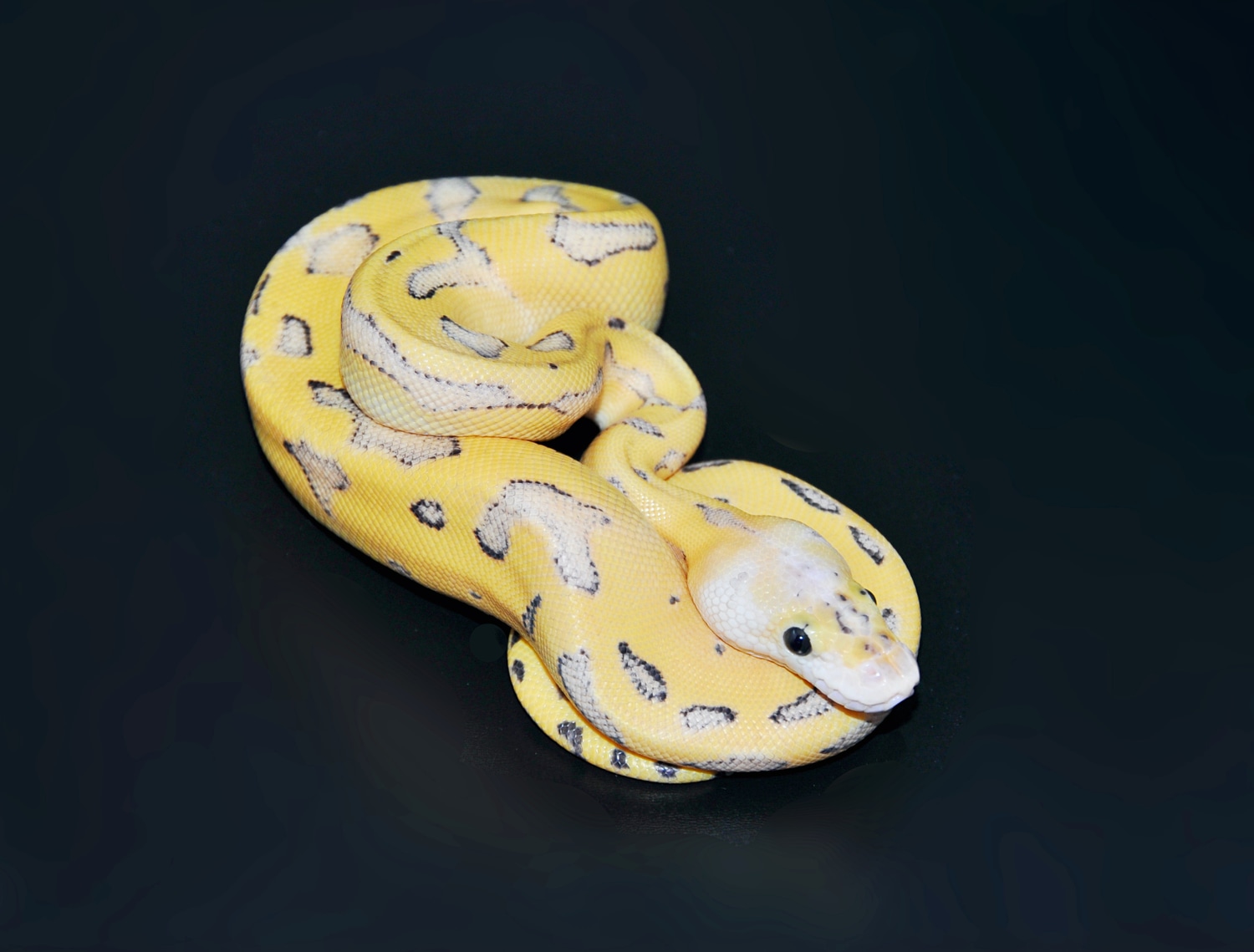
Super Pastel Yellow Belly Genetic Stripe Clown Ball Python by Marki Reptiles
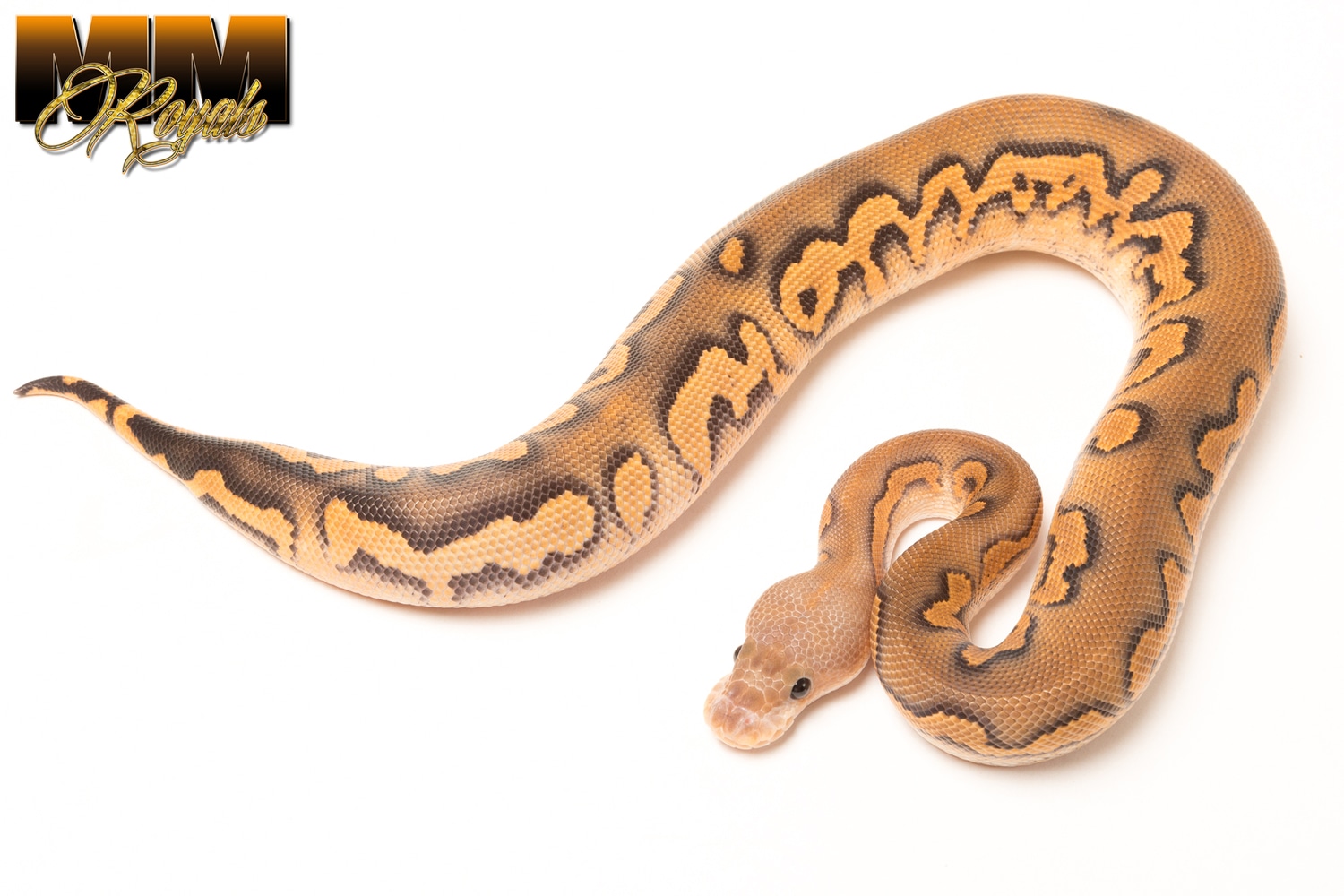
Wookie Black Pastel Fire Yellow Belly Clown Ball Python by MM Royals
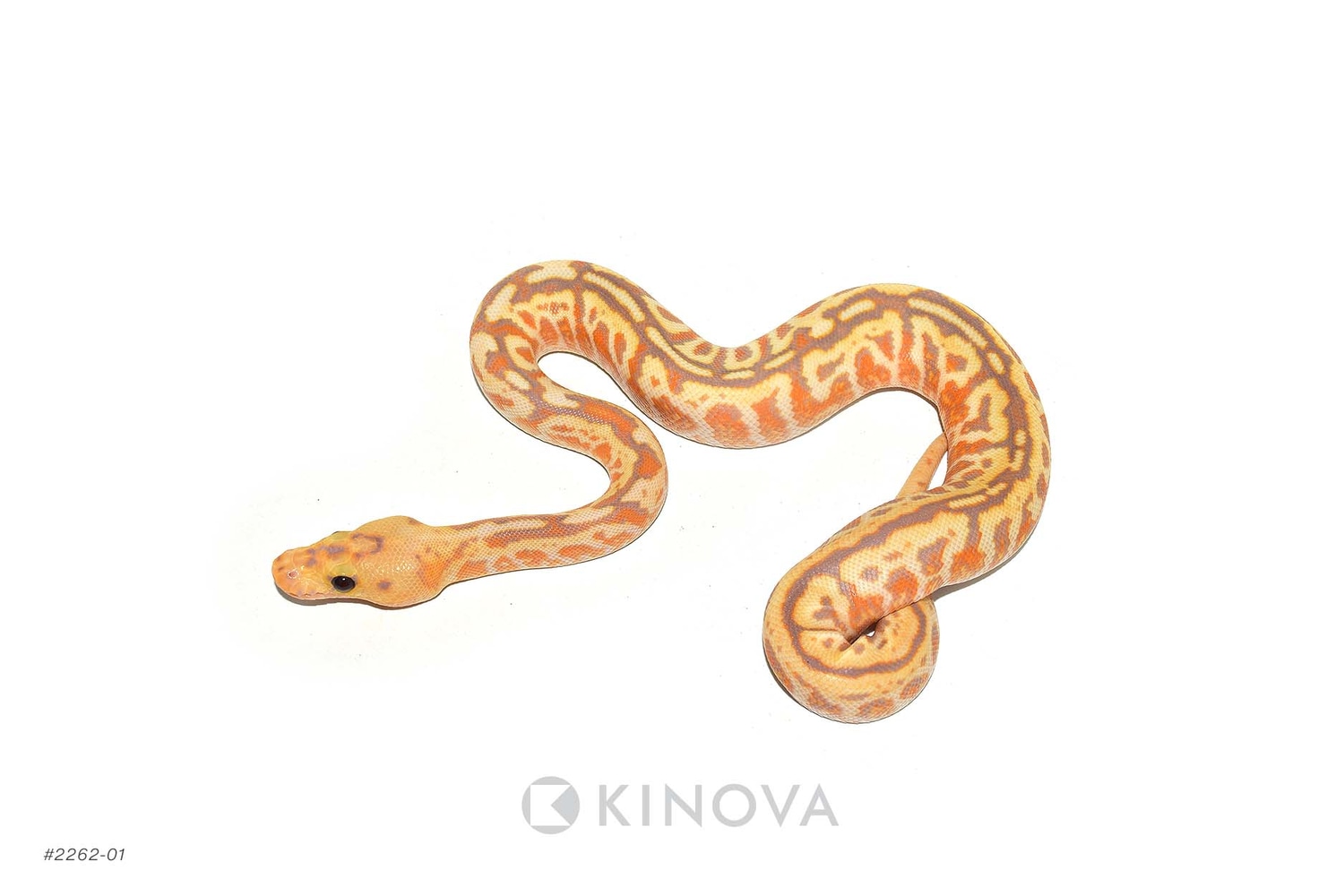
YB Coral Glow Powerball Clown (Possible Leopard Redstripe) Ball Python by KINOVA
